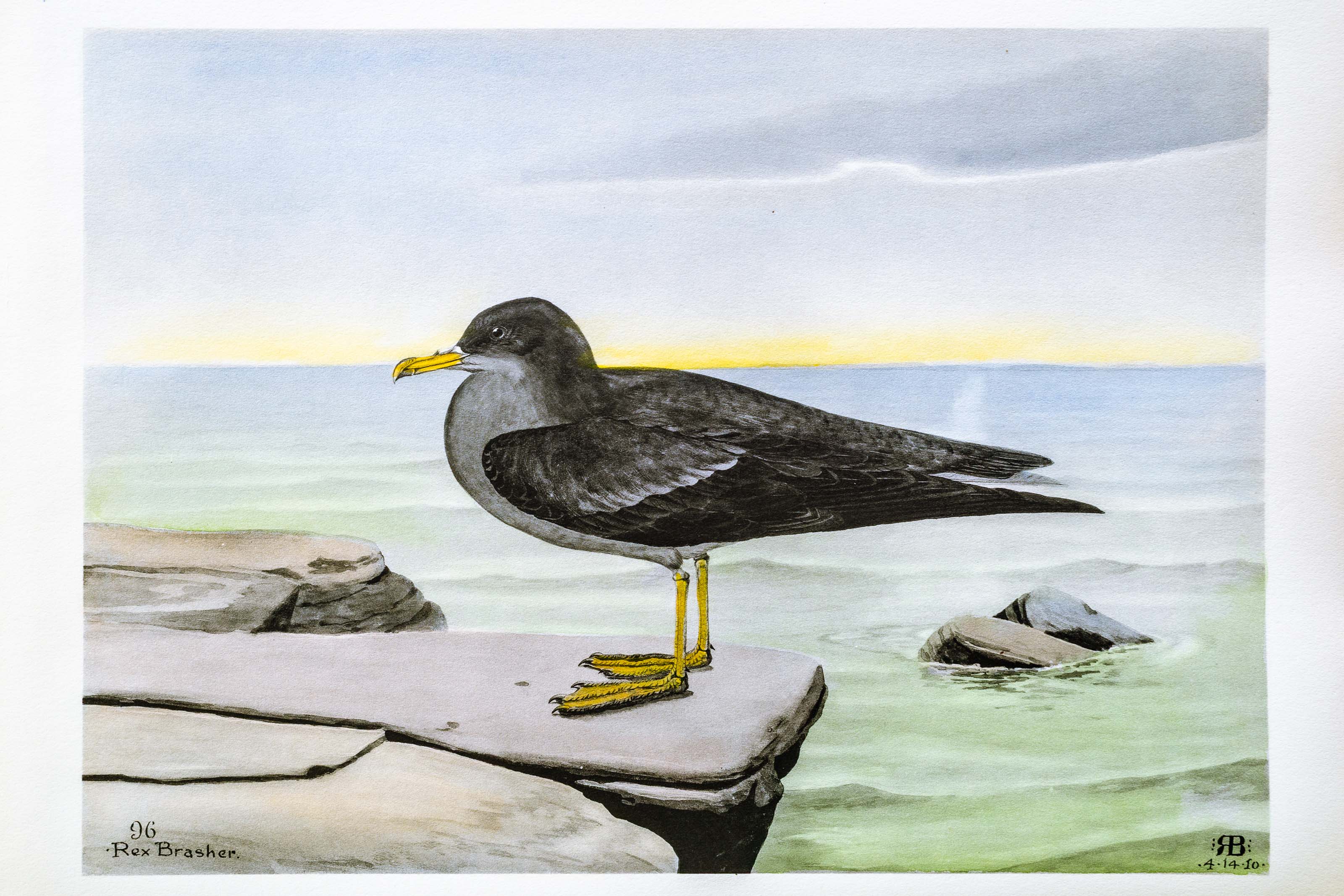
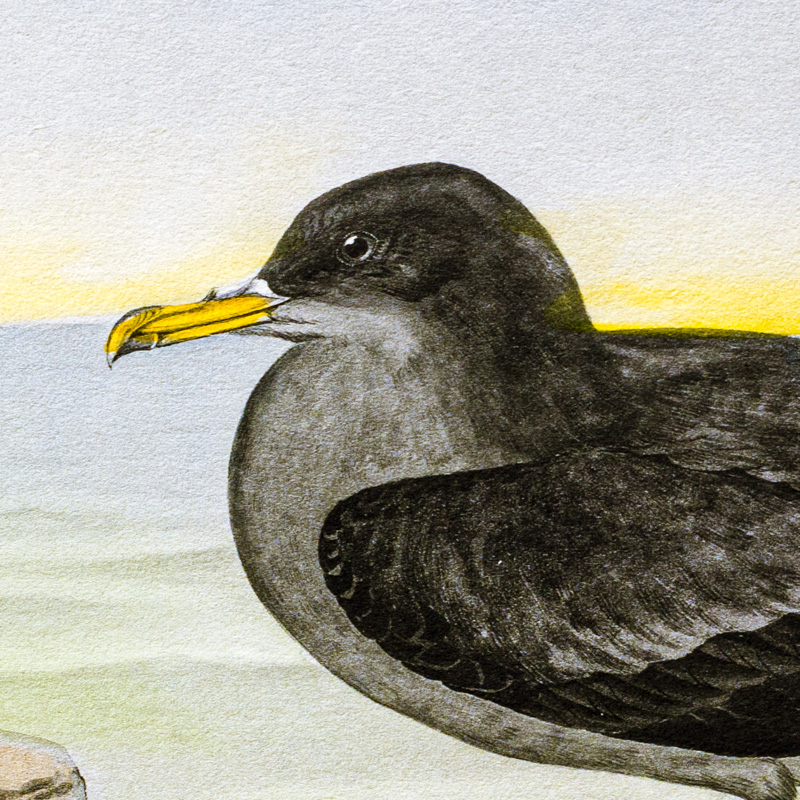
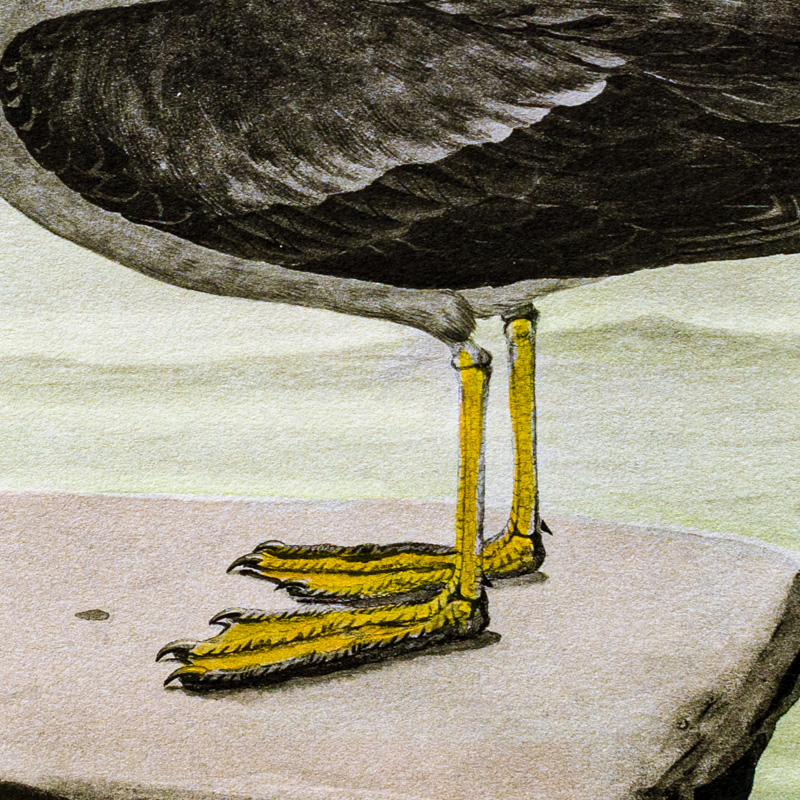

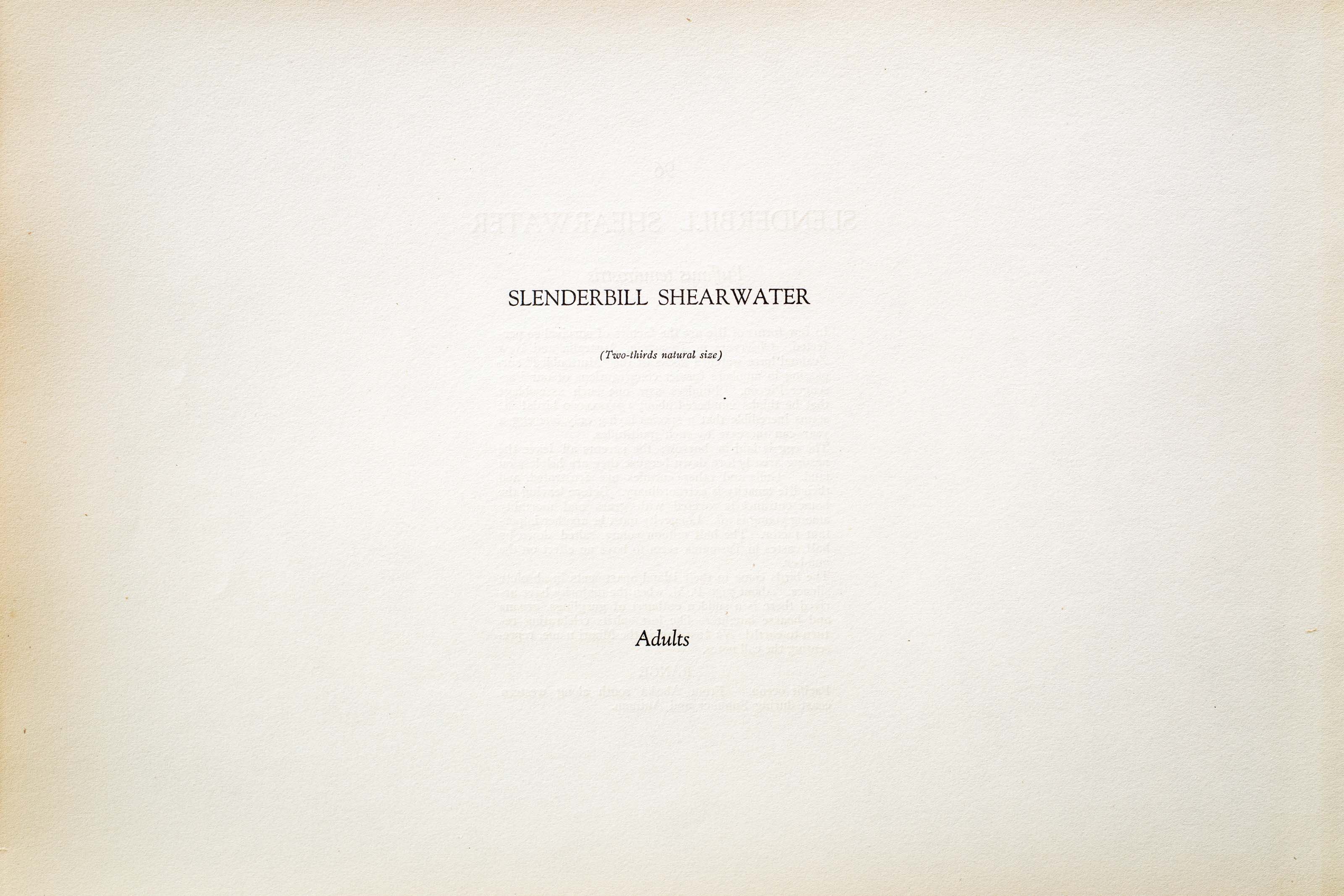
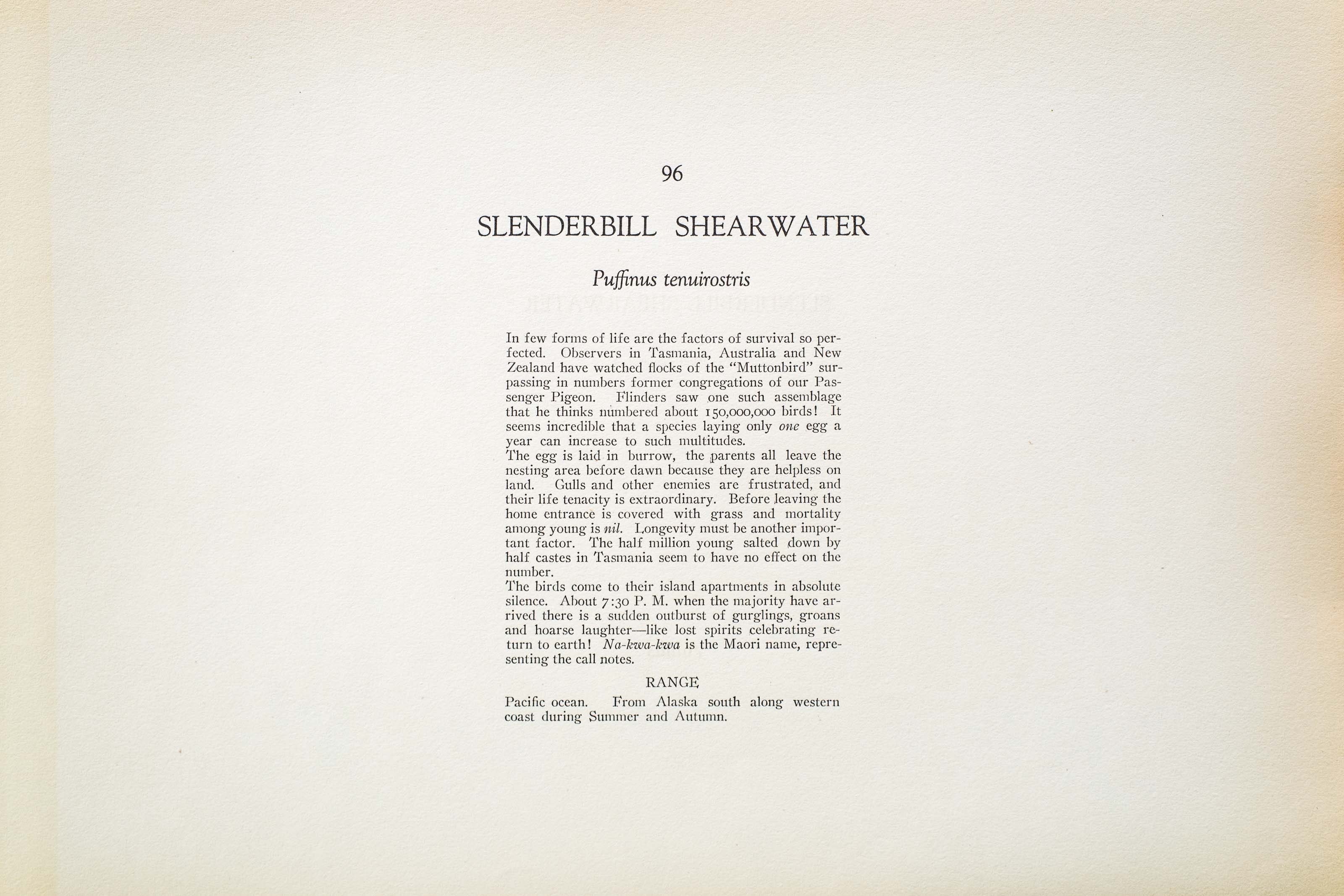

1910
1932
2
96
A team of dedicated board members, volunteers, and student interns has published every page in Volume 9. This volume includes 360 images of paintings and lyrical descriptions of birds, now available online for everyone to enjoy anywhere in the world. This is a monumental task. Each volume requires approximately 400 hours to photograph, edit, transcribe, catalog, and publish online. We need your support to complete this work.
If you're tech-savvy, have a good eye, are meticulous with details, and love structured data, please consider volunteering by emailing us at hello@rexbrasher.org.
We encourage all bird lovers and supporters to consider a monetary donation to support our mission to make Rex's work available for everyone. You can provide a one-time or recurring donation online.
In few forms of life are the factors of survival so perfected. Observers in Tasmania, Australia and New Zealand have watched flocks of the "Muttonbird" surpassing in numbers former congregations of our Passenger Pigeon. Flinders saw one such assemblage that he thinks numbered about 150,000,000 birds! It seems incredible that a species laying only one egg a year can increase to such multitudes.
The egg is laid in burrow, the parents all leave the nesting area before dawn because they are helpless on land. Gulls and other enemies are frustrated, and their life tenacity is extraordinary. Before leaving the home entrance is covered with grass and mortality among young is nil. Longevity must be another important factor. The half million young salted down by half castes in Tasmania seem to have no effect on the number.
The birds come to their island apartments in absolute silence. About 7:30 P. M. when the majority have arrived there is a sudden outburst of gurglings, groans and hoarse laughter — like lost spirits celebrating return to earth! Na-kwa-kwa is the Maori name, representing the call notes.
Pacific ocean. From Alaska south along western coast during Summer and Autumn.